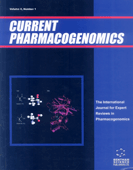Abstract
The ADP-ribosyltransferase (ADPRT) gene encodes the poly(ADP-ribose)polymerase-1 (PARP-1) enzyme, which plays critical roles in DNA-damage signaling and repair, cell death, maintenance of genomic stability, and carcinogenesis. It may also serve as a potential target for cancer therapy. In this review, we evaluate findings from animal model systems and molecular epidemiological studies to demonstrate the potential role of ADPRT/PARP-1 in aging and carcinogenesis. With increasing interest in associating human cancer risk with single nucleotide polymorphisms (SNPs) and/or dysfunction of ADPRT/PARP-1, several important technical challenges will need to be overcome. These challenges include developing specific functional assays, selecting SNPs with potential functional impact, and exploring statistical methods for gene-gene and gene-environmental interactions. Therefore, this review also highlights strategies to evaluate the functional significance of ADPRT/PARP-1 SNPs in human cancer risk assessment. In summary, dysfunction of PARP-1 may play a critical role in abnormal cellular functions; its molecular mechanism in aging and cancer susceptibility is an issue which needs urgently to be elucidated.
Keywords: signaling, tumor suppressor genes, nicotinamide adenine dinucleotide, dna repair, necrosis, chromosomal aberrations, cancer, expression, polymorphism, adp-ribosylation
Current Pharmacogenomics
Title: The Genetic Regulation of ADPRT/PARP-1 in Aging and Cancer Susceptibility
Volume: 3 Issue: 1
Author(s): Kristin L. Lockett, Isaac V. Snowhite and Jennifer J. Hu
Affiliation:
Keywords: signaling, tumor suppressor genes, nicotinamide adenine dinucleotide, dna repair, necrosis, chromosomal aberrations, cancer, expression, polymorphism, adp-ribosylation
Abstract: The ADP-ribosyltransferase (ADPRT) gene encodes the poly(ADP-ribose)polymerase-1 (PARP-1) enzyme, which plays critical roles in DNA-damage signaling and repair, cell death, maintenance of genomic stability, and carcinogenesis. It may also serve as a potential target for cancer therapy. In this review, we evaluate findings from animal model systems and molecular epidemiological studies to demonstrate the potential role of ADPRT/PARP-1 in aging and carcinogenesis. With increasing interest in associating human cancer risk with single nucleotide polymorphisms (SNPs) and/or dysfunction of ADPRT/PARP-1, several important technical challenges will need to be overcome. These challenges include developing specific functional assays, selecting SNPs with potential functional impact, and exploring statistical methods for gene-gene and gene-environmental interactions. Therefore, this review also highlights strategies to evaluate the functional significance of ADPRT/PARP-1 SNPs in human cancer risk assessment. In summary, dysfunction of PARP-1 may play a critical role in abnormal cellular functions; its molecular mechanism in aging and cancer susceptibility is an issue which needs urgently to be elucidated.
Export Options
About this article
Cite this article as:
Lockett L. Kristin, Snowhite V. Isaac and Hu J. Jennifer, The Genetic Regulation of ADPRT/PARP-1 in Aging and Cancer Susceptibility, Current Pharmacogenomics 2005; 3 (1) . https://dx.doi.org/10.2174/1570160053175054
| DOI https://dx.doi.org/10.2174/1570160053175054 |
Print ISSN 1570-1603 |
| Publisher Name Bentham Science Publisher |
Online ISSN 1570-1603 |
 22
22Related Articles
-
Intestinal Immunomodulation. Role of Regulative Peptides and Promising Pharmacological Activities
Current Pharmaceutical Design The Role of Clusterin in Carcinogenesis and its Potential Utility as Therapeutic Target
Current Medicinal Chemistry In Vivo Roles of CDC25 Phosphatases: Biological Insight into the Anti-Cancer Therapeutic Targets
Anti-Cancer Agents in Medicinal Chemistry 30 Years Lost in Anesthesia Theory
Cardiovascular & Hematological Agents in Medicinal Chemistry Therapeutic Potential of Hammerhead Ribozymes in the Treatment of Hyper-Proliferative Diseases
Current Pharmaceutical Biotechnology Targeting Kruppel-Like Factor 5 (KLF5) for Cancer Therapy
Current Topics in Medicinal Chemistry Modulation of Cell Death in Age-Related Diseases
Current Pharmaceutical Design Principles of Minimally Invasive Parathyroidectomy
Current Medical Imaging Clinical Applications of Mesenchymal Stem Cells in Laryngotracheal Reconstruction
Current Stem Cell Research & Therapy Use of Analogs of Peptide Hormones Conjugated to Cytotoxic Radicals for Chemotherapy Targeted to Receptors on Tumors
Current Drug Delivery Bioactive Chromone Derivatives – Structural Diversity
Current Bioactive Compounds Antiviral Medication in Sexually Transmitted Diseases. Part I: HSV, HPV
Mini-Reviews in Medicinal Chemistry Monoclonal Antibodies in Clinical Oncology
Anti-Cancer Agents in Medicinal Chemistry Angiotensin-Converting Enzymes (ACE and ACE2) as Potential Targets for Malignant Epithelial Neoplasia: Review and Bioinformatics Analyses Focused in Oral Squamous Cell Carcinoma
Protein & Peptide Letters Oncogene Expression Modulation in Cancer Cell Lines by DNA G-Quadruplex-Interactive Small Molecules
Current Medicinal Chemistry NBN Polymorphysms and Cancer Susceptibility: A Systematic Review
Current Genomics Targeted Drug Delivery to the Virus-Infected Airway; Complications and Remedies
Current Drug Delivery Cdc25A Protein Phosphatase: A Therapeutic Target for Liver Cancer Therapies
Anti-Cancer Agents in Medicinal Chemistry Four Major Factors Regulate Phosphatidylinositol 3-kinase Signaling Pathway in Cancers Induced by Infection of Human Papillomaviruses
Current Medicinal Chemistry HLA-I Antigen Presentation and Tapasin Influence Immune Responses Against Malignant Brain Tumors-Considerations for Successful Immunotherapy
Anti-Cancer Agents in Medicinal Chemistry













.jpeg)








